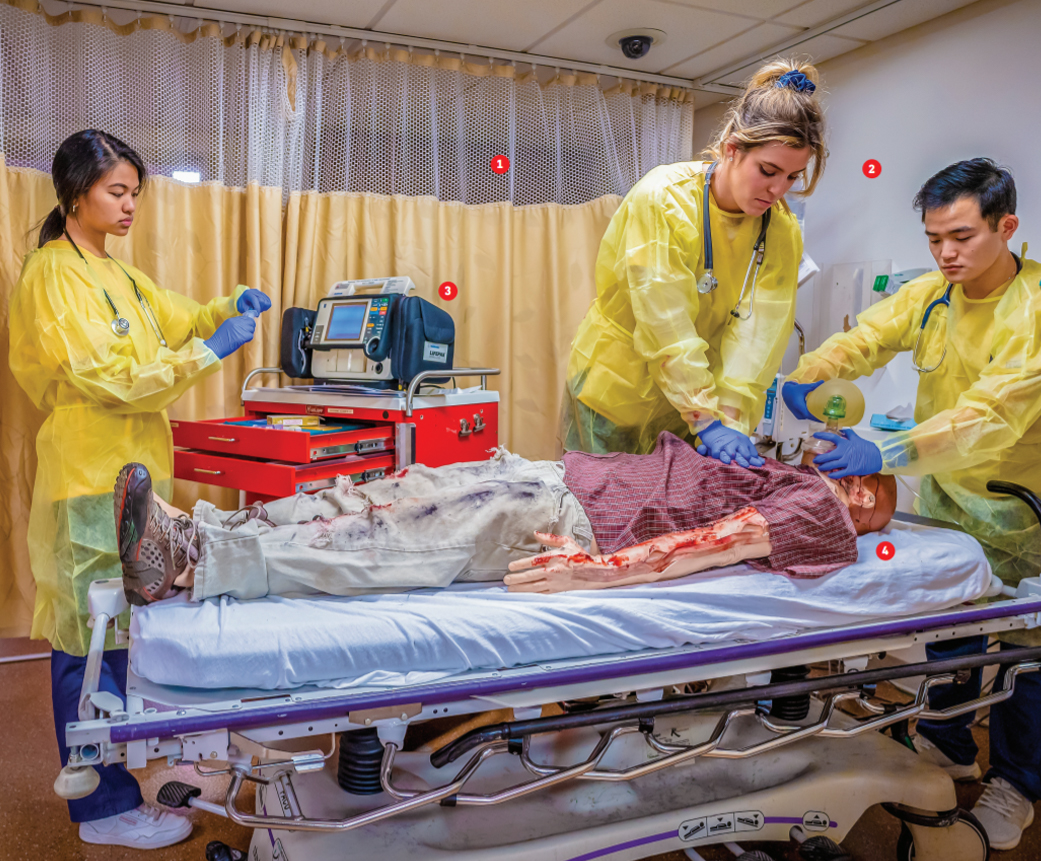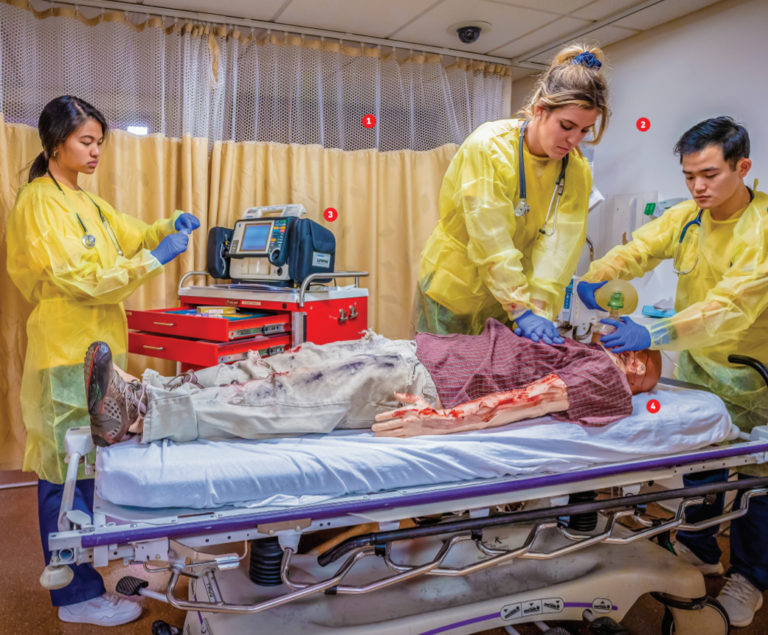
Photo by Jeff Fusco
Before the world was faced with an all-too-real contagion, Drexel nursing students were already training to cope with the chaos and danger of a pandemic, through simulation.
These seniors are partaking in the College of Nursing and Health Professions’ recurring Disaster Simulation, a rite of passage for all of Drexel’s nursing students and a key component of the required class titled, “Population Health Concepts.”
It simulates the worst-case, yet realistic scenarios that nurses might come across in their career, from pandemics to natural disasters to mass-casualty situations — for the chance to practice before they treat real patients in the field.
Some nursing schools do only less-immersive table-top simulations, if they do simulations at all. But the College of Nursing and Health Professions invests thousands of dollars into equipment and trains a crew of around 35 faculty, staff and simulated patient actors to make this experience as realistic as possible. At the same time, the college ensures that the events are coordinated with meaningful debriefing sessions and that they create a psychologically safe learning environment for students, says Helen Teng, assistant clinical professor and the course chair.
Simulations like this help students in nursing and other health-related fields develop skills in interprofessional teamwork, multiple patient management and crisis resource management, as well as communication, collaboration and leadership.
“It is good to expose our students to these ways of thinking and encourage them and engage in their psycho-motor domain of learning by doing,” says Teng. — Beth Ann Downey
1. THE SPACE
Simulations are conducted in the College’s simulation labs run through its Center for Interprofessional Clinical Simulation and Practice, whose purview encompasses more than 22,000 square feet of lab space and state-of-the-art simulation technology. Pictured is the 2,300-square-foot Human Patient Simulation Lab. Its two large configurable spaces contain three bays each, and each bay has two cameras and two overhead microphones for faculty to remotely observe their students. Each bay also has a monitor similar to those in hospitals to display a simulated patient’s vital signs.
2. THE STUDENTS
Here, Audrey Tibay (left), Melissa Radcliff (center) and Luan Ta (right), all fifth-year nursing students, work to revive a simulated patient. Over the course of three hours of non-stop simulation, they’ll encounter four separate disaster scenarios, each more stressful than the last. This scenario encompasses a fictional ER with multiple victims arriving following a mass casualty event. Expected chaos ensues as the students work to corral the confused while walk-ins vie for their attention.
3. THE EQUIPMENT
The simulations use high-fidelity, remote-controlled mannequins, like the SimMan Essential seen here, to portray patients. SimMan can mimic everything from human breathing and eye movement to vascular, cardiac and circulation abnormalities and distress. While this SimMan is leased, the average cost to purchase one can be anywhere from $80,000 to $150,000, according to the manufacturer Laerdal Medical. Students also practice using other hospital equipment, like the pictured emergency cart containing various medications, airway equipment and a defibrillator, and the bag-valve mask being used by Ta to treat SimMan’s respiratory distress.
4. THE EXTRAS
Trained individuals (not pictured) are paid $22 an hour to portray standardized patients. Some provide voicing to mannequins, screaming and crying through microphones in the control room. Others don moulage, or make up that simulates burns, cuts, bone breaks, etc. and interact with the students. The use of standardized patient actors is one of the things that helps to differentiate Drexel’s simulation offerings from those of other schools, says Teng.


